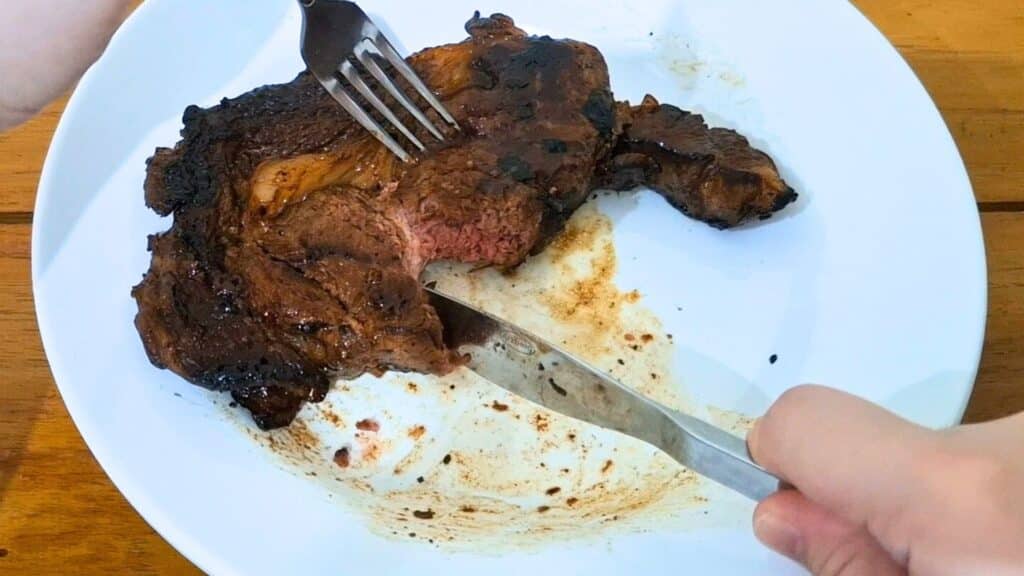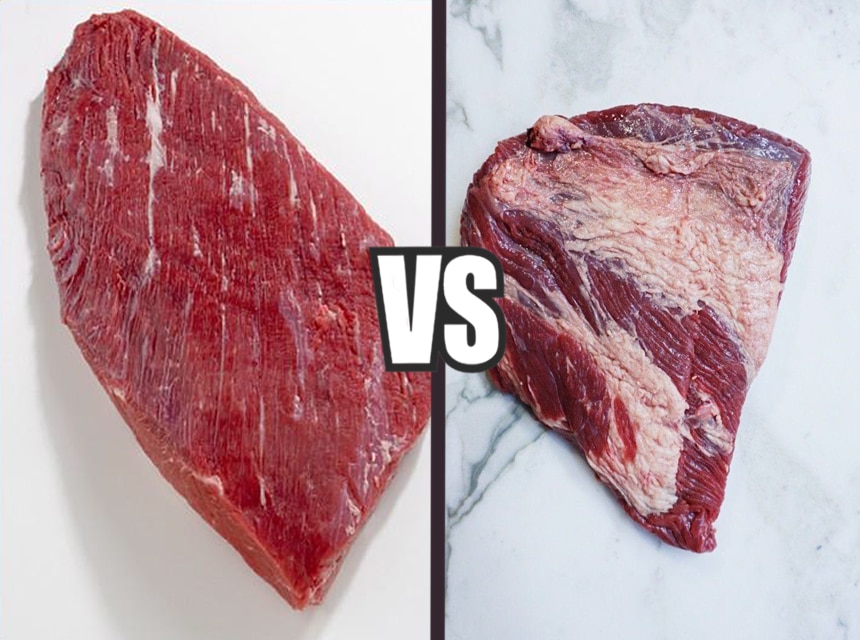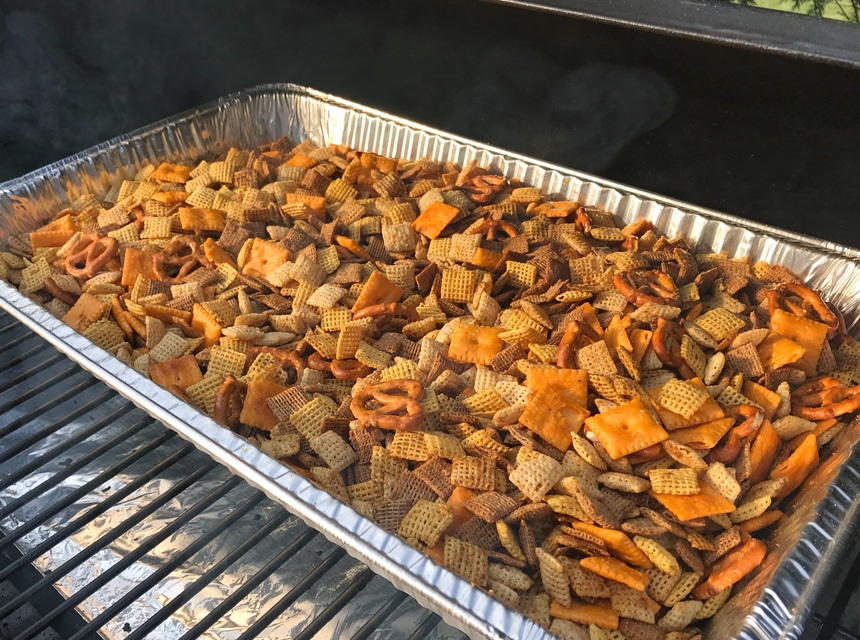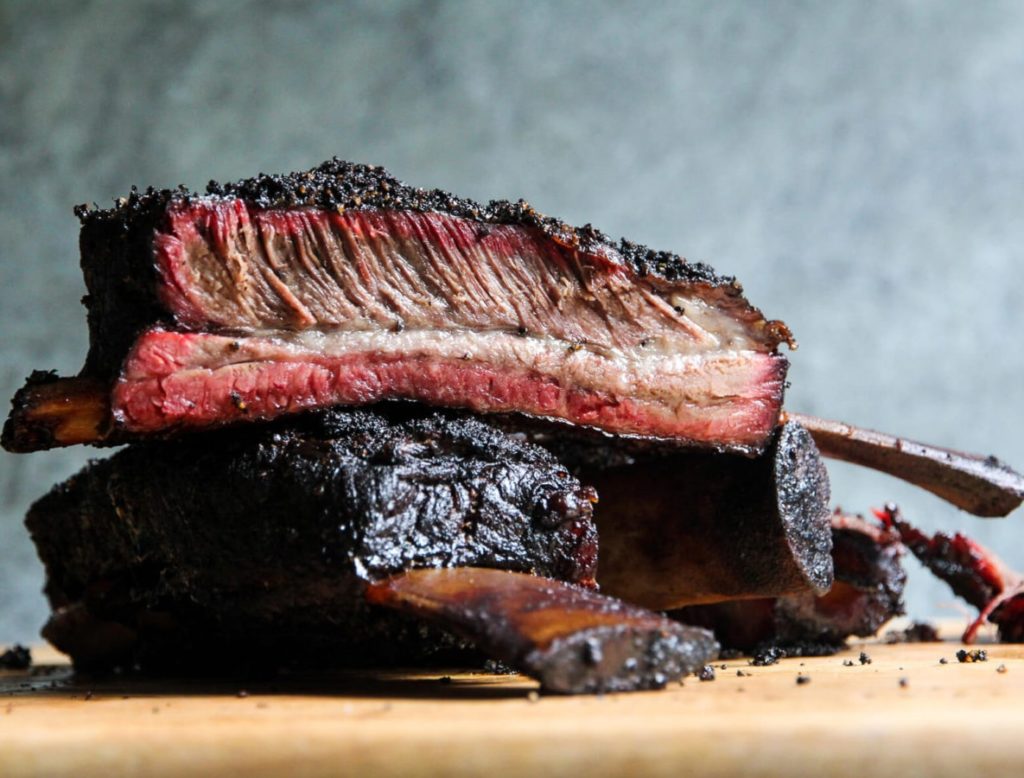

There are different cuts of beef with different names. The method of cut tends to determine many factors about the beef. For instance, the prime rib is different from the ribeye in some ways that you might not expect. Although they both come from the same area close to the animal’s ribs, they’re different. But telling the difference between prime rib and ribeye can be quite complicated.
However, we have made this prime rib vs ribeye comparison to show you the difference between them. In truth, both cuts are different in many ways, including how they are cooked, how they look, how they taste, and even their textures. This means you can easily distinguish between them, but only if you know the difference.
If you’ve ever wondered how you can tell the differences between prime rib and ribeye on your own, we’ve got you covered. In this article, we will tell you everything you need to know about the differences between these two cuts of meat.
The prime rib is known as a large roasting joint that often contains large parts of the rib bone. On the other hand, the ribeye is cut from the softest section of the rib, that is, between the sixth and twelfth rib.
Another major difference between beef ribeye roast vs prime rib is their cooking methods. While prime rib is cooked at a low temperature for a long period, ribeye is usually cooked at medium to high temps for short periods. A bake in the oven is often preferred for cooking prime rib roast, while ribeye roast is often cooked by pan searing or grilling.
As we have emphasized, the prime rib, just like its name suggests, is from the rib section of a beef carcass and is a bone-in, large roasting joint. Some also refer to it as a standing rib roast and a beef rib roast.
The prime rib is cut from the same section of the animal as the ribeye, that is, the primal rib section. If you order the prime rib at a restaurant, you’ll most likely get a slice of meat taken from the cooked roast.
The prime rib has a distinct taste, that is often influenced by its muscle and fat content filled with beefy, such flavors. When compared to the other cuts, such as the ribeye, the prime rib normally contains more fat and bone, which gives it a slight edge over the others. Ultimately, you’re sure to get a great, beefy taste from the prime rib.
Normally, the prime rib is cooked in its juices (au jus), so it won’t get dry during the cooking session as it cooks to your desired temp. Essentially, this cooking method makes the prime rib has a good amount of fat that helps keep the beef tender as it cooks. Generally, this cut is roasted at a low temp until the beef reaches between 130° F and 140° F.
Although there are different techniques, flavor rubs, and recipes you can apply, the popular method is to sear your prime rib’s outside and then roast it for about four to five hours at 200° F.
The ribeye, also known as rib steak, comes from the Longissimus Dorsi muscle around the ribs of the animal. This meat is usually well-marbled and tender because the Dorsi is underused during the animal’s life. You can also find the coveted, flavorful rib cap from the ribeye cut. The ribeye steak is known as the cowboy cut if served with bone-in, or the Spencer steak if it is served with no bone.
As mentioned earlier, the ribeye is cut from the underused muscle along the animal’s ribs, more specifically, the section stretching from the sixth rib to the twelfth rib. Also, this cut is from the prime rib. A ribeye steak must be cut before you cook the roast to be considered a ribeye. This cut is smaller than other cuts such as the prime rib because it does not include the bone.
Thanks to its location along the animal’s rib, the ribeye has a pronounced beefy flavor. When cooked/prepared correctly, the ribeye steak can be very flavorful. But when cooked incorrectly, the taste, expectedly, is much less pleasant, which is why it’s very important to fully understand how to cook it properly.
There are two popular methods of cooking ribeye: the grilling method and the reverse sear method.
To cook ribeye, some people favor using a grill, be it charcoal or gas. You’ll need to use direct heat with a grill surface temp of about 450 – 490° F. Before embarking on grilling your ribeye, it’s best to get a high-quality thermometer that tells you the internal temp and help you grill to your desired temp level.
Place your ribeye on your grill and leave it to cook. You shouldn’t use the time to determine when it’s done cooking, you should use your instant-read thermometer to get it right.
The reverse sear method is reputed as the best way to cook ribeye. You have no idea what the reverse sear method is? It’s a good thing that you’re in good hands. Let’s briefly discuss this cooking method. It involves the use of an oven or grill. It is a great method for cooking thick steaks. The reverse sear method involves a slow process of heating the steak to temperature in an oven or grill at low heat and then searing the meat at a high heat level. This method offers you exceptional control over how the ribeye cooks, thus allowing you to achieve a uniform medium-rare.
So, how do you cook ribeye by the reverse sear method?
We’ve mentioned the different factors that separate beef ribeye roast vs prime rib. But how similar are they? Of course, they are, in a few ways. They’re both exceptionally flavorful and are equally prime beef options. Although the ribeye and prime rib are cut differently, they come from the same primal area/cut of meat, which is their major similarity.
Prime rib and ribeye offer a good number of nutritional benefits, considering they’re proteins. These benefits include:
The high-quality protein in prime rib and ribeye can help to maintain a healthy/proper weight.
Prime rib and ribeye help to maintain muscle mass, so you can avoid sarcopenia, a condition characterized by losing muscle strength, muscle functional impairment, and muscle mass.
A serving of prime rib or ribeye steak delivers vitamin B12 and iron. These micronutrients are quite important in preventing anemia, a condition characterized by exhaustion, sluggishness, shortness of breath, headaches, paleness, and dizziness.
Prime rib and ribeye steak provide zinc and protein, both essential nutrients for improving immune health.
Diabetes is another health condition that can be helped by consuming prime rib and ribeye.
Is there a difference between prime rib vs ribeye taste? Yes, there is, even though it’s not heavy. Both types of meat understandably have a rich flavor because they’re cut from the same beef rib. But that’s not enough to say they have the same taste because they don’t. While the prime rib tends to have a stronger flavor due to the presence of fat and bones, ribeye tends to have a milder flavor with a buttery taste. Since the bones contribute to the superior flavor of the prime rib, what about bone-in ribeye roast vs prime rib? Bone-in ribeye, which is cooked with the bone, also has a pronounced flavor that’s not so different from the prime rib.
Another major difference between prime rib vs ribeye is the price. Though they’re both cut along the ribs, they’re sold at different prices. Expectedly, the cost for a prime rib (because it’s much larger) is usually more than the price you’ll get charged for a ribeye. Both types of meat are normally sold per pound.
However, ribeye is more favored in the grilling community, meaning you may pay more to buy it than when buying prime rib. Besides, the cost of both cuts of meat depends on where you’re buying them.
Also, boneless ribeye cuts usually cost more than bone-in cuts because they need more precision to separate the bone from the meat.
Another difference between prime rib vs ribeye is the texture. This can be attributed to the fact that the prime rib is a roast while the rib eye is a steak. The prime rib tends to be tougher than the rib eye, which is cut from the underused part of the animal’s rib.
When it comes to buying prime rib and ribeye, you have several places to buy. You can visit the grocery store, butchers, or meat specialty stores. But these places are not as easy as buying from an online store like Amazon. When you need a prime rib cut, you can visit the store’s website and find a roast like the Kansas City Steak Company Pre-seasoned Traditional Rub Prime Rib Roast seasoned with onion, celery, garlic, thyme, and coriander. Also, you can get your preferred steak like the hand-cut and pure New York Strip Steaks on Amazon.
As you can now see, there are some differences between prime rib and ribeye. While the prime rib is a large roast cut (including the ribeye), the ribeye is a well-marbled steak cut from the roast. So, prime rib vs ribeye, which is better? It’s hard to tell. Your choice of either cut will be determined by your preference, especially now that you know all about the two different cuts.





